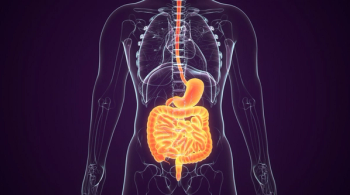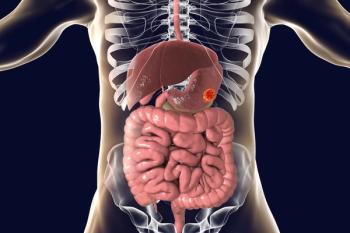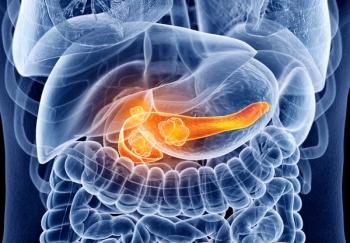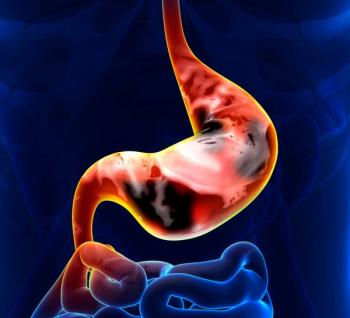
Oncology NEWS International
- Oncology NEWS International Vol 9 No 8
- Volume 9
- Issue 8
SLN Mapping Highly Accurate in Detecting the Presence or Absence of Nodal Micrometastases in Colorectal Cancer
FLINT, Michigan-The debate continues on the use of sentinel lymph node (SLN) mapping in colon cancer. How many nodes need to be analyzed to improve the outcome for this patient group? The current thought is the more nodes harvested, the better the predictive value, and Dr. Thomas LeVoyer made the case that removing more nodes yields a better survival benefit.
FLINT, MichiganThe debate continues on the use of sentinel lymph node (SLN) mapping in colon cancer. How many nodes need to be analyzed to improve the outcome for this patient group? The current thought is the more nodes harvested, the better the predictive value, and Dr. Thomas LeVoyer made the case that removing more nodes yields a better survival benefit.
Proponents of SLN mapping claim that it can not only do a better job with fewer nodes removed, but also can detect micrometastases and thus upstage patients better than standard node dissection.
A study presented by Sukamal Saha, MD, shows that sentinel lymph node mapping is associated with a 94% accuracy in detecting the presence or absence of nodal micrometastases. Dr. Saha is assistant professor of anatomy and surgery, Michigan State University, Flint.
In fact, Dr. Saha said, studies often show that although a pathologist may harvest many nodes, more than 70% of them are often under 5 mm in size. Hence it is possible that a cursory examination by the pathologist would miss many of those small metastatic lymph nodes, he said. This would leave these patients understaged and undertreated.
According to Dr. Saha, the sentinel node concept, as developed by Donald Morton, MD, for melanoma, is that the SNL is the first regional node in the direct lymphatic pathway from the primary tumor (Morton et al: Arch Surg 127:392, 1992). The status of this node will determine the tumor status of the nodal basin.
One to three of these first nodes can be removed and a detailed examination performed. When a pathologist has to harvest many nodes at random, each sample is not analyzed in detail.
The advantages of sentinel lymph node mapping according to Dr. Saha are the following:
· It enables a detailed pathologic examination by multilevel microsections with hematoxylin and eosin staining, immunostains, and reverse transcriptase-polymerase chain reaction studies.
· It may enhance the diagnosis of occult micrometastasis (upstaging).
· Thus upstaged, patients may receive adjuvant therapy affecting their survival.
The multicenter study presented at ASCO was conducted at McLaren Regional Medical Center, Michigan State University, Flint; the John Wayne Cancer Center, Santa Monica, California; and Easton Hospital, Easton, Pennsylvania. The purpose of the study was to assess the incidence of micrometastasis in SLNs and in non-SLNs, of occult micrometastasis (upstaging), and of skip metastasis (negative SLN, positive non-SLN), and the exclusive site of metastasis in SLNs vs non-SLNs.
Can we say that exclusively examining only these few nodes would still make a better diagnosis with a minimal chance of skip metastasis? Dr. Saha asked.
According to the results of this study, the answer is yes.
The patients in the phase II prospective trial had a dye injected around the tumor, and the first one to four blue nodes were marked with a suture as the sentinel nodes, which were removed en bloc with the specimen. Multilevel sectioning of these nodes at 20- to 40-micron intervals was done for H&E staining and immunohistochemistry with cytokeratine.
The 180 patients available for evaluation were aged 26 to 97 years (mean, 71 years), 78 male, 102 female. There were 139 colon, 11 rectosigmoid, and 30 rectal cancer patients.
Of the 180 concurrent patients, SLN mapping was successful in 175 (97%). The total number of lymph nodes removed was 2,722 (15.1/patient); of these, 318 (1.8/patient) were SLNs.
Negative SLNs were found in 106 patients (60%). In 99 of the 106 patients, 93% of both the SLNs and the non-SLNs were negative. Skip metastases were found in 4% of the patients (7 of 175).
Positive SLNs were found in 63 patients (36%). Of these 63 patients, 32 (18% of the total 175 patients) had other non-SLNs that were also positive in addition to the SLNs. In the remaining 31 patients with positive SLNs, the SLNs were the only sign of metastases with all other non-SLNs being negative.
In 29 of the latter 31 patients, micrometastases were found in 1 to 3 of the multiple microsections of a single SLN. In 10 out of 29 patients, these micrometastases were confirmed only by immunohistochemistry.
The overall false-negative rate (skip metastases) in the series, when looking at only the positive patients, was 10%. If the cases from the limitation criteria are excluded, the actual skip metastasis rate is 5.7%. This leaves, Dr. Saha said, a specificity of 100%, a sensitivity of 90%, a negative predictive value of 93%, and accuracy in identifying the presence or absence of metastasis of 93%, for the sentinel lymph node procedure.
Dr. Saha said that the chance of missing cancer with the SLN technique is only 1%. The procedure is technically simple, with minimal costs. There are no apparent side effects.
A meticulous examination of 1 to 4 SLNs only by multilevel microsections may allow us to accurately predict the nodal status with very low incidence of skip mets, Dr. Saha said. This may allow the pathologist to avoid costly and time consuming examination of the non-SLNs.
Articles in this issue
over 25 years ago
Scientists Identify Gene Mutations in Multiple Myelomaover 25 years ago
Single-Agent Herceptin Active in Metastatic Breast Cancerover 25 years ago
Brain Metastases Respond to Paclitaxel, Carboplatin, and Brain RTNewsletter
Stay up to date on recent advances in the multidisciplinary approach to cancer.





















































































